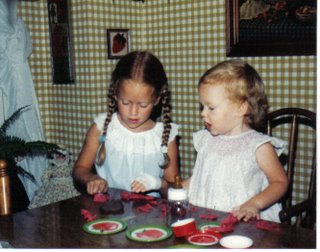Vegetable Plate
Ever have an idea, follow it through, and then just think, "Damn, I'm good!" Well, last night I hit upon the brillance of the vegetable plate.
Here's my theory:
1. Cook several veggies, and have your self a veggie plate for dinner = Yum + Healthy
2. Be a "Sunday Chef" (we'll do a post on that soon) and cook several veggies, then use them over the next few days as additions to meals = Easy + Yum + Healthy
Last night I made:
Steamed broccoli
Sweet potato fries (with Greek yogurt as a dipping sauce)
Caramelized leeks
Broiled eggplant
You don't even have to make a single one of the things listed above. Maybe you like artichokes! Bell peppers! Cauliflower! Super. Follow your bliss.
In case anything above sounds good to you, though, here are the recipes:
First I made the
Sweet Potato Fries
1. Preheat oven to 500 degrees.
2. Wash & scrub two sweet potatoes.
3. If you hate peel, peel them. (I leave it on.)
4. Slice the sweet potatoes. I do this by slicing them lengthwise into 1/2inch slices. Then I turn one slice flat on the board, and make more 1/2 inch slices, so that they are roughly french fry shaped.
5. Cover a cookie sheet with aluminum foil.
6. On the cookie sheet, pile the sweet potatoes along with:
- 2 Tbsp oil
- salt and pepper
7. If any of the following things sound good to you, you can add them too:
- 1 tsp garlic
- 2 Tbsp fresh parsley (2 tsp dried)
8. Toss the sweet potatoes to coat them in the oil and whatever else you added.
9. Spread them out flat on the cookie sheet.
10. Bake for 15 minutes, stir (flip), bake for 15 more minutes. Done!
Once the fries were in the oven, I made the
Caramelized Leeks
(This would work exactly the same and be just as delicious with caramelized onion)
1. Wash (REALLY THOROUGHLY if you're using leeks) a leek or one medium onion.
2. Chop your leek or onion.
3. Put 1 tsp butter and 1 tsp oil in a pan over medium heat.
4. Add the leek or onion to the pan, and stir it around.
5. Leave it alone, stirring only every 5 or 10 minutes, and the leek or onion will brown and start to smell fabulous.
6. When it's dark golden brown, move the pan off the heat. Done!
Once I'd put the leeks in the pan, I made the
Broiled Eggplant
1. In a medium bowl, combine:
1/4 cup olive oil
1/4 cup soy sauce
2 Tbsp garlic
2 tsp chopped fresh rosemary (skip it if you don't have it!)
2. Slice an eggplant (doesn't matter if you slice lenghtwise or crosswise) into 1/2 inch slices
3. Line a cookie sheet with aluminum foil.
4. Quickly dip the eggplant (one slice at a time) in the mixture in the bowl, and place on the cookie sheet.
*once your fries are out of the oven, turn on the broiler*
5. Place the cookie sheet in the oven and let the eggplant broil about 2-5 minutes (check it each minute).
6. Once the eggplant slices are becoming brown and sizzling, flip them over and broil for another 2-5 minutes (checking each minute).
Once I had the eggplant in the oven, I made the
Steamed Broccoli
1. Put 1/2" water in a pot.
2. If you have a steamer, drop it in. If you don't, don't worry about it.
3. Bring the water to a boil.
4. Add your broccoli. I like mine in "two bite" pieces, so that's how big I cut it up!
5. Pop the broccoli in the pot and put the lid on.
6. Leave it for 2-3 minutes. When you check it, the broccoli should be bright green! (If you do really big pieces, it might take another minute or two.) Done!
As far as leftovers, any of these things (or a combination of any of them) would be great with a simple chicken breast or fish filet!
Enjoy! And let us know if you have questions!


